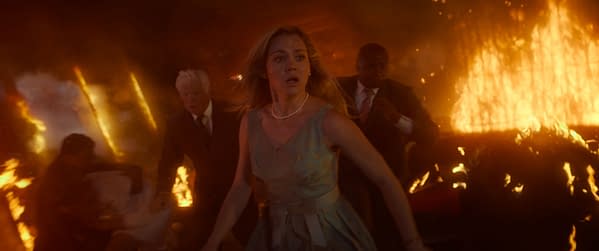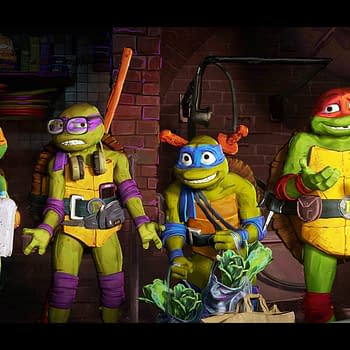Posted in: Movies, Warner Bros | Tagged: film, final destination, Final Destination: Bloodlines, horror, Warner Bros
Final Destination Bloodlines Directors on the Skyview Survivor Theory
The co-directors of Final Destination Bloodlines reveal their thoughts on the popular Skyview survivor theory and maintaining continuity.
Article Summary
- Final Destination Bloodlines directors discuss the popular Skyview survivor theory and its origins.
- Lipovsky and Stein explain why the film doesn't fully embrace the theory to maintain franchise continuity.
- Canonical conflicts from earlier films played a key role in shaping how Bloodlines approaches its story.
- Iris's research and journal tie together past Final Destination events, enabling future story possibilities.
Following the release of Final Destination Bloodlines, directors Zach Lipovsky and Adam Stein engaged with the fan-driven Skyview survivor theory, which proposes that the 1969 Skyview Restaurant Tower collapse, averted by Iris Campbell's premonition, is the origin of the Final Destination franchise, with all later films' characters descending from its survivors. This theory suggests that Death's pursuit extends to the survivors' bloodlines, targeting those who exist due to the thwarted disaster. While intrigued by its potential when crafting the film, Lipovsky and Stein chose not to fully adopt this idea, prioritizing the franchise's established canon while subtly nodding to narrative consistency.

Final Destination Bloodlines Directors Address Continuity and Fan Theories
In an interview with Screen Rant, Lipovsky and Stein discussed their thoughts on the theory, revealing they had considered similar ideas. Stein noted, "Well, that's something we discussed and debated a lot." However, they decided against it to avoid breaking canon, with Stein explaining, "We didn't go quite that far, only because it meant that their parents had to have died before they died." Lipovsky elaborated, "Which you don't see in the previous movies. So, we didn't want to break that piece of the canon. So, that's why we kept everyone who dies in our movie contained within just the Skyview." However, Stein elaborates, "But Iris' book does do research on all those other movies, on all those other accidents and premonitions, because she knows they had premonitions, and she's researching it to figure out what she can find out, if there's a way out of Death."
The decision to avoid fully embracing the Skyview survivor theory was driven by specific canonical issues, notably in Final Destination 2 and Final Destination 3, where characters like Kimberly Corman and Wendy Christensen have living parents, which conflicts with the idea that all protagonists' ancestors perished post-Skyview. By confining the deaths in Bloodlines to Iris' family, Lipovsky and Stein created a standalone story that still acknowledges the franchise's broader mythology. Iris' journal, filled with references to past incidents like Flight 180 and the Route 23 pile-up, acts as a meta-narrative device, preserving the series' openness for future stories, and potentially allowing Final Destination 7 to explore other new survivors or revisit characters like Kimberly, who evaded Death. But let's be honest, we were all hoping Wendy of Final Destination 3 was a survivor…
Final Destination Bloodlines is in theaters now.















